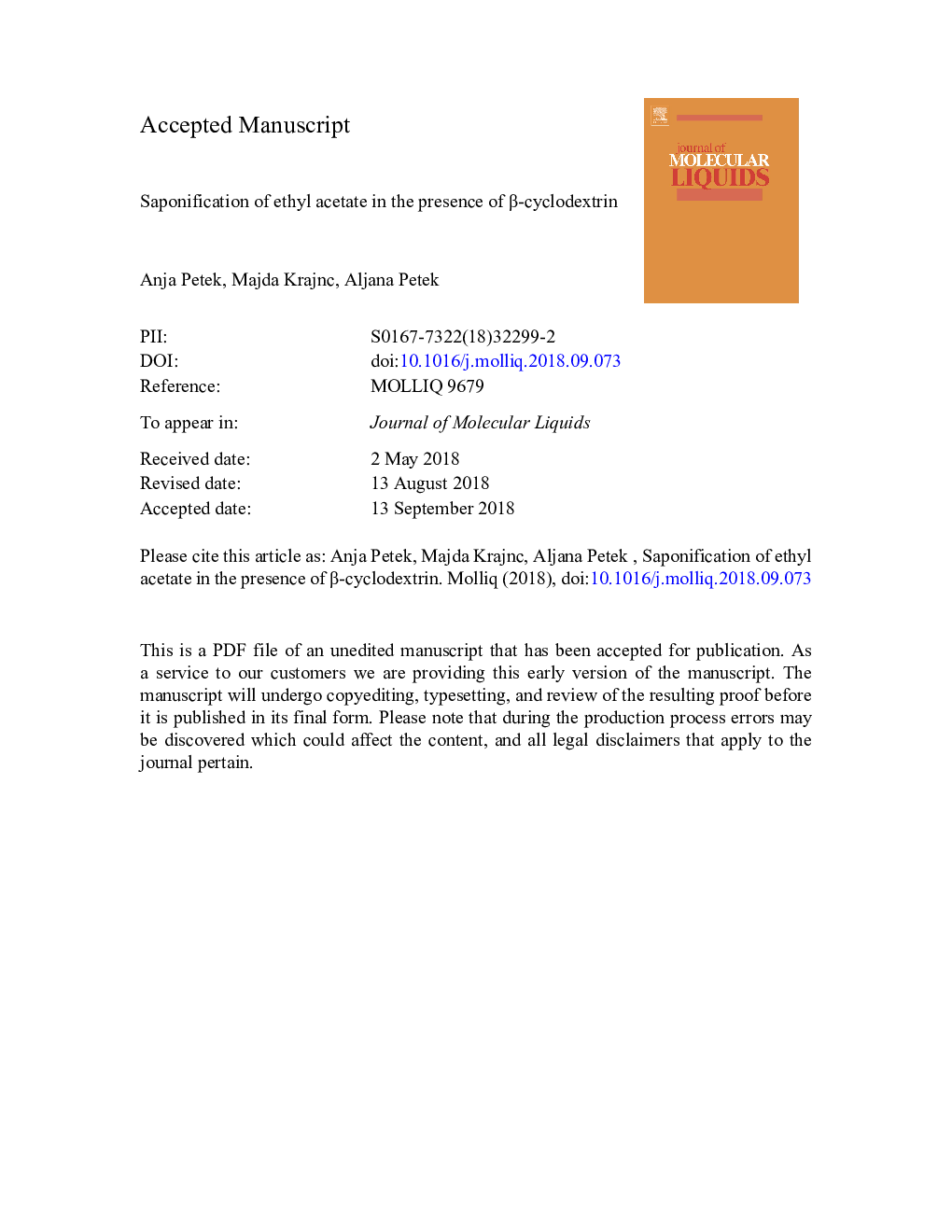| Article ID | Journal | Published Year | Pages | File Type |
|---|---|---|---|---|
| 10155139 | Journal of Molecular Liquids | 2018 | 24 Pages |
Abstract
The saponification of ethyl acetate (EtAc) in the presence of β-cyclodextrin (β-CD) was measured by conductimetry at different temperatures within a batch reactor. A new mathematical model for obtaining reaction kinetics and concentration profiles from conductivity was derived. The observed rate constants (kobs) decrease with the increase in concentration of β-CD, at each temperature. This inhibitory effect is the result of the EtAc being complexed by β-CD, and the alkaline hydrolysis that occurred was due to the free ester in the solution, because the ester molecules included within the cyclodextrin cavity were unreactive. In the solution, the release of the guest is controlled by chemical equilibria. That is, the net concentrations of free ester decrease along with the increasing concentrations of cyclodextrin, which results in the deceleration of the reaction. From the kinetic data, the association equilibrium constant (K1:1) for the formation of the 1:1 inclusion complex was determined. K1:1 increased with an increase in temperature. The inclusive process was spontaneous and entropy-driven, an effect that results from the hydrophobic effect. The proposed saponification reaction mechanism and the dependence of the reaction rate on the temperature and concentration of cyclodextrin are consistent with the observed experimental results.
Related Topics
Physical Sciences and Engineering
Chemistry
Physical and Theoretical Chemistry
Authors
Anja Petek, Majda Krajnc, Aljana Petek,
